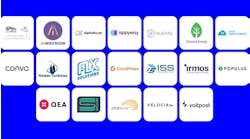Investing in transit signal priority can boost bus ridership in the U.S.
It’s a historic moment for transit infrastructure in the U.S., with bipartisan support for the INVEST in America Act prioritizing the reduction of harmful pollutants and an increased focus on transit accessibility.
The proposed legislation aims to modernize infrastructure, including roads, bridges, railways, drinking water and wastewater infrastructure, as well as transit. It is designed to create jobs, to combat the climate crisis by cutting carbon pollution from the transportation sector and to address “long-standing inequities in communities around the country with investments that make cities and towns safer and more connected.”
With respect to transit specifically, the legislation aims to:
- Invest to increase routes, reduce maintenance backlogs and provide more frequent service, with a stated outcome of “better options for riders, improved environmental outcomes and increased access to jobs and essential destinations.”
- Increase the number of zero-emission transit vehicles, supporting fleet conversion to reduce local air pollution and related health impacts.
- Fund and incentivize transit-oriented development to make transit more convenient to where people live and work, and to build sustainable, walkable communities.
- Boost funding for rural transit by more than 50 percent in the first year and set aside $50 million per year for rural persistent poverty communities.
- Create a new reduced-fare pilot program to improve access for low-income riders. Doubles the set aside for urban areas formula dollars based on low-income population and deep poverty census tracts and directs transit agencies to serve these populations.
- Streamline the Capital Investment Grant program to improve project delivery, reduce red tape and achieve cost-savings for transit agencies.
- Create new programs to address several pressing transit challenges; improving compliance with the Americans with Disabilities Act (ADA); and addressing transit deserts by providing expanded transit service to unserved and underserved communities.
Access to safe, reliable and convenient transportation options has the power to transform the lives of riders and the community at-large. If communities increase public transit ridership by 50 percent and offer greater accessibility for disadvantaged communities, they can expand and drive the benefits of public transit, including reduced congestion, decreased air and climate pollution, and enhanced social and economic opportunity.
And within these laudable priorities, there is room for technology-based infrastructure upgrades to help deliver these goals.
Already, there are justifiable concerns about the negative impact that the COVID-19 pandemic has had on public transit ridership. Investing in smart technologies like transit signal priority (TSP) can help realize the goals of transit agencies. TSP has been shown to make public transit systems more efficient, which can improve the service experience of passengers and increase ridership.
Significant efficiencies can also facilitate bus route expansions, allowing cities to serve more communities and advance equity in public transportation. For example, a 20 percent efficiency gain could enable expansion of a route by 20 percent, without having to increase the number of buses or drivers. Through efficiency and capital savings, cities are well-positioned to reinvest in expansions of existing transit availability to service a broader set of communities.
By adjusting traffic signals to prioritize public transit vehicles (particularly when they are behind schedule), TSP can improve the efficiency, predictability and reliability of public transit. In addition, connected TSP systems allow transit systems to carefully track these efficiencies and gains in granular detail. Connected intersections enable cities to capture real-time traffic data, including activity on bicycle lanes, which enables them to improve traffic flow and conduct in-depth traffic analyses to inform city planning choices.
Cities are increasingly turning to bus rapid transit (BRT) systems as an appealing, rider-friendly means of moving large numbers of people through dense, congested city streets. There are a wide range of factors that contribute to their success, but agencies can find themselves constrained by limitations outside of their control. TSP provides a means of moving buses through BRT corridor intersections swiftly, avoiding delays, maintaining correct headways and assuring riders of reliable on-time performance.
Installing TSP helped Albuquerque Ride’s BRT route, Albuquerque Rapid Transit, become a top-rated BRT system. And last October, Montgomery County (MD) launched its first BRT line designed to run on one of the region’s busiest transit corridors, a 14-mile stretch between the growing cities of Burtonsville and Silver Spring, Md
Plus, TSP can help with the on-going transition away from diesel-powered buses. It can help zero-emission buses maintain consistent speeds, thereby reducing the number of unnecessary stops, improving battery efficiency and lowering fuel costs. Green lights also mean the bus gets through its route faster, thus reducing the risk of depleting its battery before returns to the bus yard. Better schedule adherence and more predictable arrivals allow for recharging time to be built into schedules.
Ultimately, increased ridership is directly tied to the reliability of available public transportation options. Savvy municipalities may wish to reinvest savings from reduced fuel consumption into expanding the geographic reach of public transit routes, one of the INVEST Act’s stated goals.
Attracting greater public transit ridership is particularly important today, as global congestion grew by 15 percent between 2010 and 2018, but bus ridership has rapidly declined nationwide in recent years. Improving transit systems can help combat some of the reasons for the reduction in bus ridership, including failure to meet consumer expectations for frequent, reliable and convenient transportation options.
Decision- and policymakers should work with municipalities and transit authorities to consider including TSP in their future infrastructure investments to improve on-time performance and service reliability, reduce environmental impact, and most importantly, boost ridership.

Nicole Rennalls | President, Global Traffic Technologies, LLC
Nicole Rennalls is the president of Global Traffic Technologies, LLC (GTT), a Vontier operating company.


